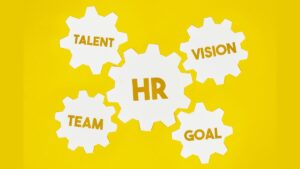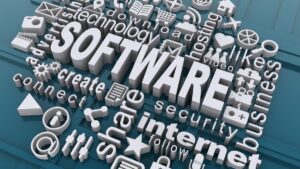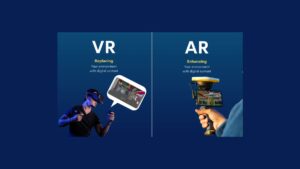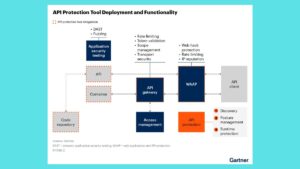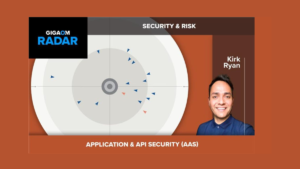How Predictive Analytics is Beneficial in HR Management

Predictive analytics has become a powerful tool in the world of Human Resource (HR) management, helping organizations make better-informed decisions, optimize workforce strategies, and improve overall efficiency. By leveraging data and advanced algorithms, predictive analytics can forecast future trends, behaviors, and outcomes, allowing HR teams to anticipate challenges and proactively address them. In this blog, we will explore how predictive analytics is transforming HR management and the key benefits it offers to businesses.
What is Predictive Analytics in HR?
Predictive analytics in HR involves using historical and current data to make predictions about future workforce trends. It leverages statistical models, machine learning algorithms, and data mining techniques to analyze patterns and forecast outcomes related to employee behavior, performance, and organizational dynamics.
With the vast amount of data available in HR systems, predictive analytics can provide insights into various aspects of workforce management, including recruitment, employee retention, performance management, and succession planning. The goal is to help HR teams make data-driven decisions to optimize HR processes and drive better business outcomes.
Key Benefits of Predictive Analytics in HR Management
Here are some of the significant ways in which predictive analytics is beneficial in HR management:
1. Improving Recruitment and Hiring
Predictive analytics can greatly enhance the recruitment and hiring process by helping organizations identify the best candidates for a role. It can analyze data from previous hiring cycles, such as the qualifications of successful hires, their career progression, and performance metrics, to predict which candidates are likely to excel in a particular role.
Benefits in recruitment include:
- Enhanced Candidate Screening: Algorithms can assess resumes and job applications to filter out the best candidates based on data-driven criteria.
- Predicting Candidate Success: By analyzing traits and characteristics of past hires who performed well, predictive models can forecast which applicants will be most successful.
- Reducing Time-to-Hire: Predictive tools can automate candidate matching and shortlisting, speeding up the recruitment process.
2. Boosting Employee Retention
Employee turnover can be costly and disruptive. Predictive analytics helps HR teams identify patterns that indicate employees may be at risk of leaving, allowing organizations to take preemptive action to improve employee satisfaction and reduce attrition rates.
Predictive analytics can:
- Identify Risk Factors: Factors such as job satisfaction, engagement levels, workload, compensation, and career development opportunities can be analyzed to predict employees who are likely to resign.
- Implement Retention Strategies: Once at-risk employees are identified, HR teams can take targeted actions, such as offering additional training, revising compensation packages, or providing career growth opportunities, to retain valuable staff.
- Improve Employee Engagement: Insights from predictive analytics can be used to enhance employee engagement programs by understanding what motivates employees and addressing any concerns before they lead to disengagement.
3. Enhancing Workforce Planning and Scheduling
Predictive analytics enables HR departments to optimize workforce planning by forecasting future workforce needs, such as staffing levels and skill requirements. This ensures that the organization has the right number of employees with the right skills at the right time.
Benefits in workforce planning include:
- Anticipating Staffing Requirements: By analyzing factors such as seasonality, project timelines, and business growth, predictive analytics can help HR teams anticipate when additional staff will be needed or when there may be excess capacity.
- Optimizing Shift Scheduling: For businesses with shift-based workforces, predictive analytics can forecast labor demand, enabling more efficient scheduling and minimizing overtime costs.
- Managing Talent Gaps: Predictive analytics can identify skill gaps and recommend training programs to ensure the workforce is equipped to meet future challenges.
4. Improving Performance Management
Performance management is a key area where predictive analytics can have a significant impact. By analyzing historical performance data, predictive models can help HR teams identify factors that influence high performance, enabling them to develop targeted strategies to improve employee productivity.
Predictive analytics can:
- Forecast Employee Performance: Identify factors that contribute to high performance and predict which employees are likely to excel based on these factors.
- Personalize Development Plans: Use performance data to create individualized development plans that cater to each employee’s strengths and areas for improvement.
- Set Realistic Goals: Predictive models can help HR teams set achievable performance goals by considering historical trends and future projections.
5. Optimizing Learning and Development Programs
Predictive analytics can also play a crucial role in designing and optimizing learning and development programs. By analyzing data related to employee skills, career progression, and learning preferences, organizations can create targeted training programs that are more likely to yield positive results.
Benefits include:
- Personalized Learning Paths: Predictive models can recommend training programs based on an employee’s current skills, job role, and career aspirations.
- Identifying High-Potential Employees: By assessing various data points, predictive analytics can help HR teams identify employees with the potential for leadership roles and provide them with tailored development opportunities.
- Evaluating Training Effectiveness: Predictive analytics can assess the impact of training programs on employee performance and suggest improvements to maximize return on investment.
6. Supporting Succession Planning
Succession planning is critical for ensuring business continuity, especially in key leadership roles. Predictive analytics can help HR teams identify employees who are ready for promotion or who need additional development to fill future leadership positions.
Predictive analytics can:
- Assess Leadership Potential: Analyze employee data to determine who has the skills and competencies necessary for leadership roles.
- Plan for Workforce Changes: Predict when key employees may retire or leave the organization, allowing HR to proactively plan for their replacements.
- Develop Leadership Pipelines: Use data-driven insights to create a pipeline of future leaders by identifying high-potential employees and providing them with leadership development opportunities.
7. Mitigating Compliance and Legal Risks
Predictive analytics can help organizations stay compliant with labor laws and regulations by identifying patterns that may indicate potential legal risks. For instance, analytics can be used to detect patterns of discrimination in hiring practices or pay disparities between different demographic groups.
Benefits in compliance include:
- Proactive Risk Management: Identify potential compliance risks and take corrective actions before they escalate into legal issues.
- Ensuring Fair Practices: Use predictive insights to ensure fair treatment of employees in areas such as hiring, promotions, and compensation.
- Improving Policy Compliance: Predictive models can forecast the likelihood of policy violations, allowing HR to implement preventive measures.
Challenges in Implementing Predictive Analytics in HR
While predictive analytics offers significant benefits, there are some challenges that HR teams may face when implementing it:
- Data Quality and Availability
- High-quality data is essential for accurate predictions. Incomplete or inaccurate data can lead to flawed insights and misguided decisions.
- Privacy Concerns
- Handling sensitive employee data requires adherence to data privacy regulations, such as GDPR. Organizations must ensure that predictive analytics practices comply with these regulations.
- Change Management
- Implementing predictive analytics may require a cultural shift in the organization. HR teams may need to train staff on new tools and encourage data-driven decision-making.
- Integration with Existing Systems
- Integrating predictive analytics with existing HR software, such as HRIS or HRMS, can be challenging if the systems are not compatible.
Future Trends in Predictive Analytics for HR
The use of predictive analytics in HR is expected to continue growing, with new trends and technologies shaping its future:
- Artificial Intelligence (AI) and Machine Learning Integration
- The integration of AI and machine learning with predictive analytics will enable even more accurate forecasts and the automation of data analysis.
- Real-Time Predictive Insights
- Predictive analytics tools are moving towards providing real-time insights, allowing HR teams to make decisions faster and more effectively.
- Increased Focus on Employee Experience
- Predictive analytics will be used more extensively to improve the employee experience by predicting and addressing employee needs, preferences, and potential issues.
- Enhanced Predictive Models for Diversity and Inclusion
- Organizations will use predictive analytics to identify diversity gaps and implement strategies to promote an inclusive workplace.
Conclusion
Predictive analytics is transforming HR management by providing data-driven insights that enhance recruitment, employee retention, performance management, and workforce planning. The ability to forecast future trends and make proactive decisions empowers HR teams to optimize their strategies and achieve better business outcomes. While there are implementation challenges, the benefits of predictive analytics far outweigh the obstacles, making it an invaluable tool for modern HR management.
By embracing predictive analytics, organizations can stay ahead of workforce trends, address potential issues before they arise, and create a more efficient, engaged, and future-ready workforce.

